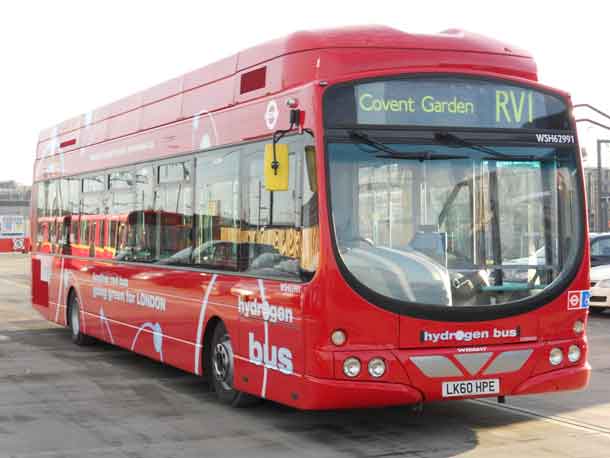
Theoretical meteorologist Edward Norton Lorenz gave the world one of its most enduring memes when, in a 1972 lecture, he said that a butterfly flapping its wings in Brazil can produce a tornado in Texas. The chaos theory he referenced was too arcane for the popular fancy but the butterfly image stuck.
Every now and then you can connect the dots between butterflies and tornadoes. Around 2002 a few science-minded citizens—Lorenz’s butterflies—began meeting for pizza in the board room of the Mooresville South Iredell Chamber of Commerce to see how the hydrogen economy engine might be coupled to local growth. They called themselves the Hydrogen Economy Advancement Team—HEAT.
NetNewsLedger has been reporting on Hydrogen-Powered Rail since 2007
The native butterflies included Duke Energy’s hydrogen expert; an Ingersoll-Rand design engineer; a global hydrogen producer’s sales representative; a telephone company environment and transportation futurist; a public school science teacher; an airline pilot; the plant manager in a plate glass company that used a lot of process hydrogen; and a mechanical engineer at a Mooresville firm, Nissens Cooling Solutions Inc., plus a few others.
Fast forward to today’s hydrogen tornado: A CNBC story last month was headlined, Hydrogen is at a ‘tipping point’ with $11 trillion market set to explode, says Bank of America. The European Union and China are vying for leadership in the global transition to renewable energy which requires hydrogen—the only technology able to simultaneously transport and store intermittent renewable electrical power. Japan, South Korea, the United Kingdom and the Netherlands are in hot pursuit. Even the Trump Administration—no one’s notion of green gophers—has been steadily, if quietly, on the move to hydrogen for at least a couple of years.
Closer to home: Search The North Carolina Department of Environmental Quality’s October, 2019, Clean Energy Plan. There is not one mention of hydrogen and only one nod to fuel cells. Batteries are mentioned 36 times. Governor Cooper’s “Executive Order Number 80” on climate doesn’t mention hydrogen. For context, Googling “national hydrogen economy” nets 17,400 hits; “national battery economy” nets zero.
Back to the butterflies: Late in the George W. Bush era, the Department of Defense had BNSF Railways Topeka Kansas shops build the first hydrail locomotive. The Obama Administration scrapped it but, for years, “HH 1205” was the biggest fuel cell vehicle ever to move on land.
In 2003, the Cambridge “think tank” of the US Department of Transportation invited one of Mooresville’s butterflies to discuss how fuel cell technology might be adapted to passenger rail service. That was the birth of the generic term of art, “hydrail.”
About that time, the Centralina Council of Governments asked Mooresville and its other members to encourage alternative fuel vehicles. Mooresville had long been working with the Charlotte Area Transit System to help find funds for light rail service to Charlotte. That sparked the hydrail alternative.
By 2005, Mooresville’s HEAT team had morphed into the Mooresville Hydrail Initiative and, with Appalachian State University, was hosting its annual International Hydrail Conferences. These were held at universities in Charlotte, Salisbury, Denmark, Spain, Turkey (United Nations sponsored), England and in Canada—where the hydrogen tornado finally touched down. It cut a wide swath, growing wider every year.
Mooresville’s keynote speaker in Toronto was Daryl Wilson—now the Executive Director of the 90-corporation Hydrogen Council. The Hydrogen Council was formed by CEOs at the 2017 Davos, Switzerland, World Economic Forum to advance the global transition off carbon fuels. In 2013, Daryl was CEO of Hydrogenics Inc., a global leader in fuel cell and electrolyzer hydrogen equipment. His speech caught the attention of Alstom Transport—one of the world’s biggest train builders.
By 2015, Alstom and Hydrogenics were in the hydrail train business and had sold the first forty to Germany, where they are built.
As insiders have known from the beginning, trains, ships, trucks, planes and other heavy transport applications (which don’t require an impossible ubiquitous infrastructure in order to launch) are hydrogen’s natural progression. Cars come last, riding on heavy transport’s infrastructure.
In Europe, Alstom’s Coradia iLint made enough media noise to be heard above the H2-car clatter.
North Carolina has been sheltered so far, from energy’s winds of change. Mooresville-invited hydrail manufacturers from Spain, Colorado, California and Germany have been waved-off by NC Commerce. Today Charlotte is busily installing 1880s St. Petersburg, Russia, technology while St. Petersburg is transitioning to 2020 Charlotte-area hydrail tech.
As you read this, Coradia iLint hydrail trains are moving through the State of Niedersachsen in North Germany. They’re wireless, powered by green hydrogen and run silent except for wheel noise and a faint electronic hum from their inverters. Their only exhaust is water so pure it was served to VIP guests when the trains entered public service in 2018.
France, Scotland, Sweden and the Netherlands will complete railway conversion from diesel to hydrail by 2035. The UK will convert by 2040 and Germany’s target is 2038.
On top of the German iLints is a fuel cell cooling system designed and built in Mooresville by Nissens Cooling Solutions, one of the original butterflies.


